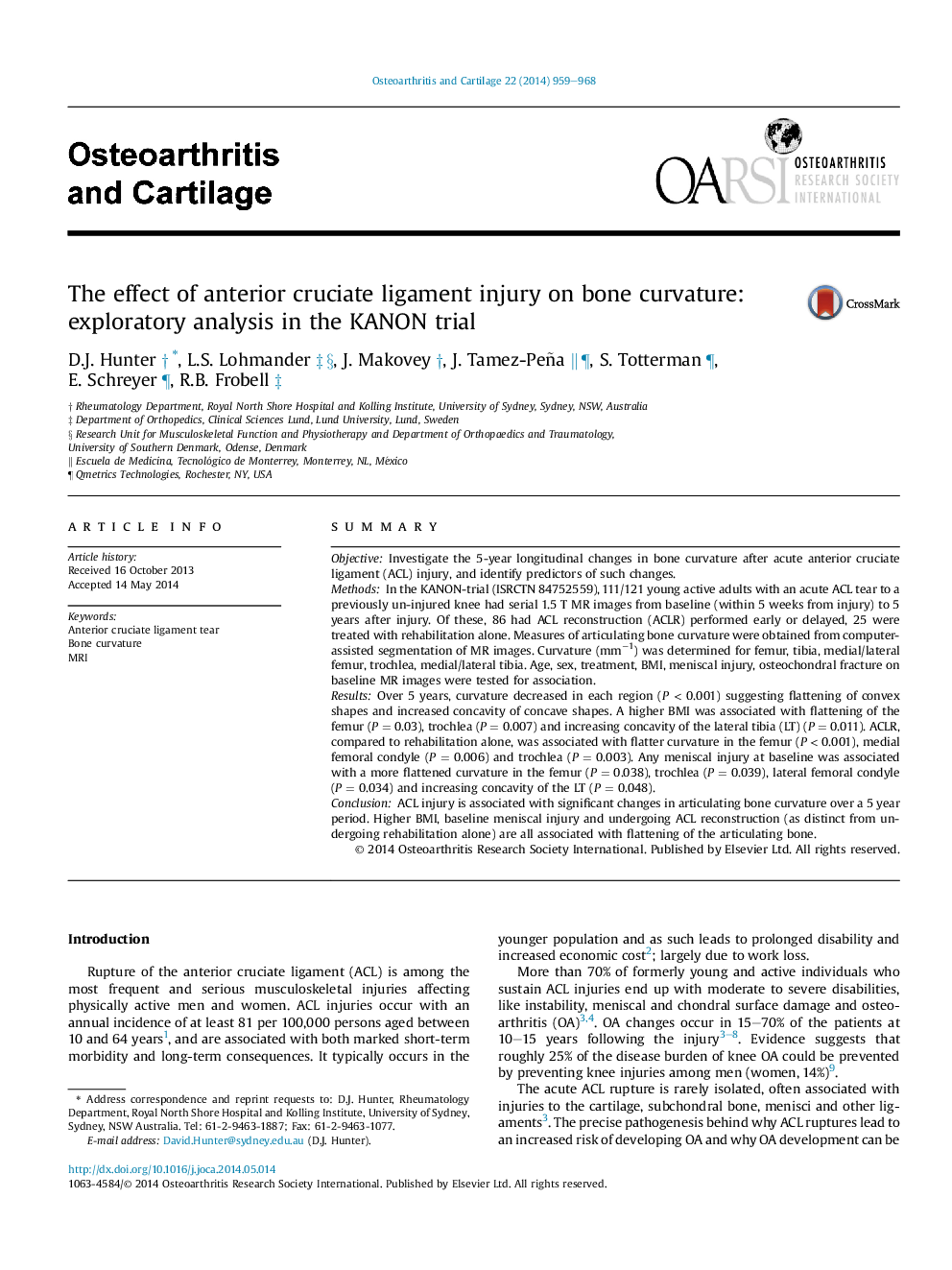| Article ID | Journal | Published Year | Pages | File Type |
|---|---|---|---|---|
| 3379374 | Osteoarthritis and Cartilage | 2014 | 10 Pages |
SummaryObjectiveInvestigate the 5-year longitudinal changes in bone curvature after acute anterior cruciate ligament (ACL) injury, and identify predictors of such changes.MethodsIn the KANON-trial (ISRCTN 84752559), 111/121 young active adults with an acute ACL tear to a previously un-injured knee had serial 1.5 T MR images from baseline (within 5 weeks from injury) to 5 years after injury. Of these, 86 had ACL reconstruction (ACLR) performed early or delayed, 25 were treated with rehabilitation alone. Measures of articulating bone curvature were obtained from computer-assisted segmentation of MR images. Curvature (mm−1) was determined for femur, tibia, medial/lateral femur, trochlea, medial/lateral tibia. Age, sex, treatment, BMI, meniscal injury, osteochondral fracture on baseline MR images were tested for association.ResultsOver 5 years, curvature decreased in each region (P < 0.001) suggesting flattening of convex shapes and increased concavity of concave shapes. A higher BMI was associated with flattening of the femur (P = 0.03), trochlea (P = 0.007) and increasing concavity of the lateral tibia (LT) (P = 0.011). ACLR, compared to rehabilitation alone, was associated with flatter curvature in the femur (P < 0.001), medial femoral condyle (P = 0.006) and trochlea (P = 0.003). Any meniscal injury at baseline was associated with a more flattened curvature in the femur (P = 0.038), trochlea (P = 0.039), lateral femoral condyle (P = 0.034) and increasing concavity of the LT (P = 0.048).ConclusionACL injury is associated with significant changes in articulating bone curvature over a 5 year period. Higher BMI, baseline meniscal injury and undergoing ACL reconstruction (as distinct from undergoing rehabilitation alone) are all associated with flattening of the articulating bone.
